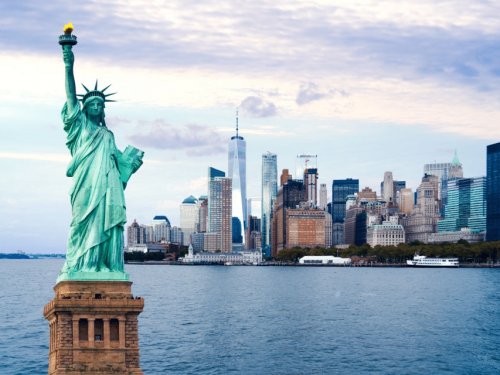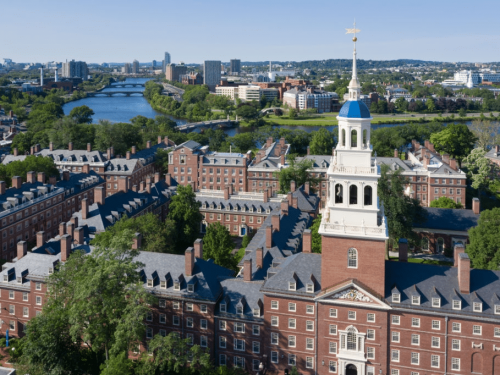Home » Study Destinations » Study In USA » Living in USA
The United States of America (USA), commonly known as the United States (U.S. or US) or America, is a country comprising 50 states. It is the fourth largest country in the world by area covered almost the size of the entire Europe. It has a total population of about 327 million and is regarded as the third most populous country in the world. Its population is only 4% of the world total, but the U.S. holds 31% of the total wealth in the world, the largest share of global concentrated wealth in a single country. It is a founding member of the United Nations, World Bank, International Monetary Fund, Organization of American States (OAS), NATO, and other international organizations. It is the foremost military power in the world, making up a third of global military spending. Living in USA is a dream for many across the globe
According to the International Monetary Fund, the U.S. GDP of $16.8 trillion constitutes 24% of the gross world product at market exchange rates and over 19% of the gross world product at purchasing power parity (PPP). The U.S. dollar is the world’s primary reserve currency. The United States is the largest producer of oil in the world, as well as its second-largest importer. Wealth, like income and taxes, is highly concentrated; the richest 10% of the adult population possess 72% of the country’s household wealth, while the bottom half claim only 2%
It is important to know about the climate for those who are planning on living in the USA. The United States, with its large size and geographic variety, includes most climate types. However, it is identified with having continental climate type with cold winters and hot summers with a season duration depending on latitude and distance from the sea. The United States of America is divided into eight main regions, each with its unique landscape and conditions with a distinct difference between the weather and climate in the north and the south.
The Great Plains
The Great Plains are a region that encompasses North and South Dakota, Kansas, Nebraska and Oklahoma, and features flat, dry and grassy landscapes that transform into arid desert further west and a more Mediterranean climate on the Californian coast. Winter in these northern states along with the Midwest states Iowa, Illinois, Michigan, Indiana, Minnesota, Ohio, Missouri, and Wisconsin can see as much as 2 feet of snow in one day with temperatures dropping substantially compared to the mild but humid summer conditions. Summer temperatures can reach over 100°F (38°C) yet drop to as low as -30°F (-34°C) during the winter.
The Rocky Mountains
The Rocky Mountains are cold and snowy with some parts of Colorado, Montana, Idaho, and Wyoming receiving up to 12m of snow in an entire season. Even in summer, mountain temperatures are still cool and snowfall can occur almost all year round. On the other hand, the deserts of the Southwest are hot and dry, especially in summer. States like Nevada, Arizona, Utah, and New Mexico can see temperatures up to and above 100°F (38°C) with thunderstorms often occurring from July to September. Winters are generally mild with little to no rainfall.
The Pacific Northwest
The Pacific Northwest is known for its cool, damp weather with places like Washington, Oregon, northern California and west of the Cascade Range seeing frequent rainfall in winter and even more from November to March. The weather is generally mild year-round with extreme temperatures a rarity. Conditions in the northwest are much drier with inland regions featuring desert or semi-arid landscapes. The Northeast and Upper South weather patterns are best known for their summers with high humidity of 80% or more and high temperatures in the 90’s (32°C) or above.
The U.S. Dollar is the currency used in the country. It is also the world’s primary currency reserve. In practice, the dollar is divided into 100 smaller cent units. The symbol $, usually written before the numerical amount, is used for the U.S. dollar. Currently printed denominations are $1, $2, $5, $10, $20, $50, and $100. Notes above the $100 denomination stopped being printed in 1946 and were officially withdrawn from circulation in 1969. Though still predominantly green, post-2004 series incorporate other colors to better distinguish different denominations
Washington, D.C is the capital of the United States. Founded after the American Revolution as the seat of government of the newly independent country, Washington was named after George Washington, the first president of the United States and a Founding Father. The city hosts 177 foreign embassies as well as the headquarters of many international organizations, trade unions, non-profits, lobbying groups, and professional associations, including the World Bank Group, the International Monetary Fund (IMF), the Organization of American States, AARP, the National Geographic Society, the Human Rights Campaign, the International Finance Corporation, and the American Red Cross.
Sports is a key feature of people living in the USA. American football is by several measures the most popular spectator sport.
The National Football League (NFL) has the highest average attendance of any sports league in the world, and the Super Bowl is watched by millions globally. Baseball has been regarded as the U.S. national sport since the late 19th century, with Major League Baseball (MLB) being the top league. Basketball and ice hockey are the country’s next two leading professional team sports, with the top leagues being the National Basketball Association (NBA) and the National Hockey League (NHL)
Personal transportation is dominated by automobiles, which operate on a network of 4 million miles of public roads. The world’s second-largest automobile market,[606] The United States has the highest rate of per-capita vehicle ownership in the world, with more than 900 vehicles per 1,000 Americans. In Contrast, India has only 3 vehicles per 1000 Indians. Mass transit accounts for 9% of total U.S. work trips.
In most states, children are required to attend school from the age of six or seven) until they turn 18 (generally bringing them through twelfth grade, the end of high school); some states allow students to leave school at 16 or 17. The basic literacy rate is approximately 99%. The United Nations assigns the United States an Education Index of 0.97, tying it for 12th in the world.
To know more about the education system in the USA, click here
Some of the top cities in the USA are as below
New York
Los Angeles
Chicago
Houston
Phoenix
San Francisco
You’re a step closer to studying in the USA, schedule an appointment to speak with us. It’s Free!

USA is one of the most popular destinations for international students across the world and for many also a dream destination. Find out why

One of the primary reasons why it’s a popular destination is the number of top universities present in the country.

Unlike a single intake in Indian universities, colleges and universities in USA offer multiple intakes. Know more about it

Applying for a USA student visa? Here’s more information about it. Know more about the documentation, fees, etc.

Wondering what it would cost to study in the USA including the tuition and living expenses? Find out here

With 5 of the top 10 universities in the world, the USA’s education system is regarded as one of the best in the world

I loved the in-depth analysis and varied career options provided by Amod. He assists at every step, starting from shortlisting career options to sending out applications to the best universities. I would recommend his consultancy to any student looking for overseas education.

Amod from ProAmica Career Development was really helpful, polite and patient while helping me find the right course and University.

I had a great counseling session with one of the team members. Absolutely loved the dedication and in-depth analysis, with a detailed explanation of the procedure. I would recommend to every student looking for studying oversees. 👍

